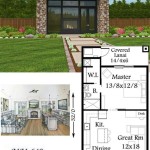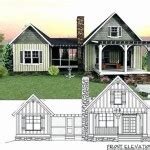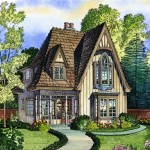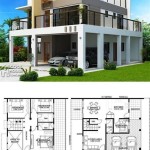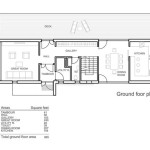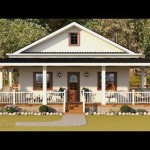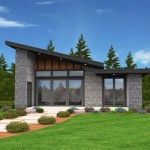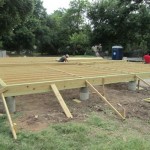Panoramic view house plans are architectural designs that prioritize the creation of expansive and unobstructed views of the surrounding landscape. These plans typically incorporate large windows, floor-to-ceiling glass walls, and open floor plans to maximize natural light and create a seamless connection between the interior and exterior spaces. For instance, a panoramic view house plan might feature a great room with floor-to-ceiling windows that offer breathtaking views of a mountain range or a coastal setting.
Panoramic view house plans have gained popularity in recent years due to advancements in window technology and structural engineering. These advancements have made it possible to create homes with expansive glass areas that are both energy-efficient and durable. As a result, homeowners can enjoy panoramic views without sacrificing comfort or functionality.
In the following sections, we will explore the key elements of panoramic view house plans, discuss the benefits and challenges of incorporating panoramic views into a home design, and provide examples of beautiful and inspiring panoramic view homes.
When designing a panoramic view house plan, there are several key elements to consider:
- Maximize natural light
- Create seamless indoor-outdoor flow
- Consider energy efficiency
- Choose durable materials
- Plan for privacy
- Consider the orientation of the house
- Incorporate outdoor living spaces
- Think about the views from every room
- Work with an experienced architect
- Set a realistic budget
By carefully considering these elements, you can create a panoramic view house plan that meets your needs and allows you to enjoy the beauty of your surroundings.
Maximize natural light
One of the key benefits of panoramic view house plans is the ability to maximize natural light. Large windows and floor-to-ceiling glass walls allow sunlight to flood into the home, creating a bright and airy atmosphere. Natural light has many benefits, including improved mood, increased productivity, and reduced energy costs.
To maximize natural light in a panoramic view house plan, there are several design strategies to consider:
- Use large windows and floor-to-ceiling glass walls. The larger the windows, the more natural light will enter the home. Floor-to-ceiling glass walls are particularly effective at maximizing natural light, as they allow light to enter from multiple directions.
- Orient the home to take advantage of the sun’s path. In the Northern Hemisphere, homes that are oriented to face south will receive the most natural light. In the Southern Hemisphere, homes that are oriented to face north will receive the most natural light.
- Use light-colored finishes. Light-colored walls, floors, and ceilings reflect light, making the home feel brighter and more spacious. Avoid using dark colors, as they will absorb light and make the home feel darker.
- Install skylights. Skylights are a great way to bring natural light into rooms that do not have windows. They can be installed in any room of the house, but they are particularly effective in bathrooms, kitchens, and hallways.
By following these design strategies, you can create a panoramic view house plan that is filled with natural light. This will not only make your home more enjoyable to live in, but it will also save you money on energy costs.
In addition to the benefits listed above, maximizing natural light in a panoramic view house plan can also help to improve your health. Natural light has been shown to boost vitamin D levels, improve sleep quality, and reduce stress.
Create seamless indoor-outdoor flow
One of the key benefits of panoramic view house plans is the ability to create a seamless indoor-outdoor flow. This is achieved through the use of large windows, floor-to-ceiling glass walls, and open floor plans that connect the interior and exterior spaces of the home.
There are several benefits to creating a seamless indoor-outdoor flow in a panoramic view house plan:
- Increased natural light. Large windows and floor-to-ceiling glass walls allow natural light to flood into the home, creating a bright and airy atmosphere. This natural light can help to improve mood, increase productivity, and reduce energy costs.
- Improved ventilation. Open floor plans and large windows allow for cross-ventilation, which can help to keep the home cool and comfortable in warm weather. This can reduce the need for air conditioning, which can save you money on energy costs.
- Extended living space. By blurring the lines between the interior and exterior spaces, a seamless indoor-outdoor flow can extend the living space of the home. This is ideal for entertaining guests, relaxing outdoors, or simply enjoying the views.
- Increased curb appeal. A panoramic view house plan with a seamless indoor-outdoor flow can be very attractive from the outside. This can increase the curb appeal of the home and make it more appealing to potential buyers.
To create a seamless indoor-outdoor flow in a panoramic view house plan, there are several design strategies to consider:
- Use large windows and floor-to-ceiling glass walls. The larger the windows, the more natural light will enter the home and the more seamless the indoor-outdoor flow will be. Floor-to-ceiling glass walls are particularly effective at creating a seamless indoor-outdoor flow, as they allow the views to be enjoyed from both inside and outside the home.
- Create open floor plans. Open floor plans eliminate walls and other barriers between the interior and exterior spaces of the home. This creates a more spacious and inviting atmosphere, and it makes it easier to move between the different areas of the home.
- Incorporate outdoor living spaces. Outdoor living spaces, such as patios, decks, and balconies, can extend the living space of the home and create a seamless indoor-outdoor flow. These spaces can be used for entertaining guests, relaxing outdoors, or simply enjoying the views.
By following these design strategies, you can create a panoramic view house plan with a seamless indoor-outdoor flow. This will not only make your home more enjoyable to live in, but it will also save you money on energy costs and increase the curb appeal of your home.
In addition to the benefits listed above, creating a seamless indoor-outdoor flow in a panoramic view house plan can also help to improve your health. Studies have shown that spending time in nature can reduce stress, improve mood, and boost creativity. By creating a seamless indoor-outdoor flow, you can bring the benefits of nature into your home and enjoy them all year round.
Consider energy efficiency
When designing a panoramic view house plan, it is important to consider energy efficiency. Large windows and floor-to-ceiling glass walls can lead to heat loss in the winter and heat gain in the summer, which can increase energy costs. However, there are several design strategies that can be used to improve the energy efficiency of a panoramic view house plan.
- Use energy-efficient windows and doors. Energy-efficient windows and doors are designed to minimize heat loss and heat gain. Look for windows and doors that have a high Energy Star rating.
- Install insulation. Insulation helps to keep the home warm in the winter and cool in the summer. Be sure to insulate the walls, roof, and foundation of the home.
- Use passive solar design. Passive solar design uses the sun’s energy to heat the home in the winter and cool the home in the summer. This can be achieved by orienting the home to take advantage of the sun’s path and by using thermal mass to store heat.
- Install a geothermal heating and cooling system. Geothermal heating and cooling systems use the earth’s constant temperature to heat and cool the home. This can be a very energy-efficient way to heat and cool a home.
By following these design strategies, you can create a panoramic view house plan that is both energy-efficient and comfortable to live in. This will not only save you money on energy costs, but it will also reduce your environmental impact.
Choose durable materials
When selecting materials for a panoramic view house plan, it is important to choose durable materials that can withstand the elements and last for many years. The following are some of the most important factors to consider when choosing durable materials:
Weather resistance: The materials used in a panoramic view house plan should be able to withstand the elements, including rain, snow, wind, and UV radiation. This is especially important for materials used on the exterior of the home, such as siding, roofing, and windows.
Durability: The materials used in a panoramic view house plan should be durable enough to withstand everyday use and abuse. This is especially important for materials used in high-traffic areas, such as flooring, countertops, and furniture.
Low maintenance: The materials used in a panoramic view house plan should be low maintenance, meaning that they require minimal upkeep and cleaning. This is especially important for materials used on the exterior of the home, as these materials will be exposed to the elements.
Sustainability: The materials used in a panoramic view house plan should be sustainable, meaning that they are produced in a way that minimizes environmental impact. This includes using recycled materials, renewable resources, and low-VOC (volatile organic compound) materials.
By choosing durable materials, you can create a panoramic view house plan that will last for many years to come. This will not only save you money on repairs and replacements, but it will also reduce your environmental impact.
Plan for privacy
When designing a panoramic view house plan, it is important to consider privacy. Large windows and floor-to-ceiling glass walls can provide stunning views, but they can also compromise privacy. There are several design strategies that can be used to improve privacy in a panoramic view house plan.
- Use landscaping to create privacy. Trees, shrubs, and other plants can be used to create a natural privacy screen around the home. This is a great way to add privacy without sacrificing the views.
- Install privacy screens. Privacy screens can be made from a variety of materials, such as wood, fabric, or metal. They can be installed on the exterior of the home, on the interior of the home, or both. Privacy screens can be used to block the views from specific areas, such as a neighbor’s yard or a busy street.
- Use curtains or blinds. Curtains and blinds can be used to add privacy to windows and doors. They can be opened during the day to enjoy the views, and closed at night or when privacy is desired.
- Tint the windows. Tinting the windows can help to reduce visibility from the outside. This is a great way to add privacy without sacrificing the views.
By following these design strategies, you can create a panoramic view house plan that provides both privacy and stunning views. This will allow you to enjoy the best of both worlds.
Consider the orientation of the house
The orientation of the house is an important factor to consider when designing a panoramic view house plan. The orientation of the house will determine the amount of natural light that enters the home, the views that are available from the home, and the energy efficiency of the home.
In the Northern Hemisphere, homes that are oriented to face south will receive the most natural light. This is because the sun is in the southern part of the sky for most of the day. Homes that are oriented to face north will receive the least amount of natural light. Homes that are oriented to face east will receive more natural light in the morning, while homes that are oriented to face west will receive more natural light in the evening.
The views that are available from the home will also be affected by the orientation of the house. Homes that are oriented to face a mountain range or a body of water will have better views than homes that are oriented to face a busy street or a neighbor’s yard. When choosing the orientation of the house, it is important to consider the views that are available from the site.
The energy efficiency of the home will also be affected by the orientation of the house. Homes that are oriented to face south will be more energy-efficient in the winter, while homes that are oriented to face north will be more energy-efficient in the summer. This is because the sun’s rays are more direct in the winter, so homes that are oriented to face south will receive more heat from the sun. In the summer, the sun’s rays are more indirect, so homes that are oriented to face north will receive less heat from the sun.
By considering the orientation of the house, you can create a panoramic view house plan that maximizes natural light, views, and energy efficiency. This will not only make your home more enjoyable to live in, but it will also save you money on energy costs.
Incorporate outdoor living spaces
Outdoor living spaces are a great way to extend the living space of a panoramic view house plan and enjoy the outdoors. There are many different types of outdoor living spaces that can be incorporated into a panoramic view house plan, such as patios, decks, balconies, and porches.
- Patios. Patios are paved areas that are typically located on the ground level. They can be made from a variety of materials, such as concrete, brick, or pavers. Patios are a great place to relax, entertain guests, or simply enjoy the views.
- Decks. Decks are elevated platforms that are typically made from wood or composite materials. They can be attached to the house or freestanding. Decks are a great place to relax, sunbathe, or entertain guests. They also provide a great vantage point for enjoying the views.
- Balconies. Balconies are platforms that are attached to the side of a building. They are typically made from wood, metal, or concrete. Balconies are a great place to relax, enjoy the views, or grow plants. They can also be used as an outdoor dining area.
- Porches. Porches are covered areas that are typically located on the front or back of a house. They can be screened in or open air. Porches are a great place to relax, read, or entertain guests. They also provide a great place to enjoy the views.
By incorporating outdoor living spaces into a panoramic view house plan, you can create a home that is both beautiful and functional. Outdoor living spaces will allow you to enjoy the outdoors and the views from your home all year round.
Think about the views from every room
When designing a panoramic view house plan, it is important to think about the views from every room. This will ensure that all of the rooms in the home have access to the views, and that the views are maximized from every vantage point.
There are several things to consider when thinking about the views from every room. First, consider the orientation of the house. The orientation of the house will determine which rooms have the best views. For example, a house that is oriented to face south will have better views of the sunset than a house that is oriented to face north. Second, consider the size and shape of the windows. The size and shape of the windows will affect how much of the view is visible from each room. Third, consider the placement of the furniture. The placement of the furniture can block or enhance the views from each room.
By considering the views from every room, you can create a panoramic view house plan that maximizes the views from all of the rooms in the home. This will make your home more enjoyable to live in and will also increase the value of your home.
Here are some specific tips for thinking about the views from every room:
- Place the main living areas on the side of the house with the best views. This will ensure that the main living areas have the best access to the views.
- Use large windows and floor-to-ceiling glass walls to maximize the views from each room. This will allow you to enjoy the views from all of the rooms in the home.
- Place the furniture in each room so that it does not block the views. This will ensure that all of the occupants of the home can enjoy the views.
By following these tips, you can create a panoramic view house plan that maximizes the views from every room. This will make your home more enjoyable to live in and will also increase the value of your home.
Work with an experienced architect
When designing a panoramic view house plan, it is important to work with an experienced architect. An experienced architect will be able to help you create a home that maximizes the views from every room, while also considering factors such as energy efficiency, privacy, and durability. Here are some of the benefits of working with an experienced architect:
Experience and expertise. An experienced architect will have the knowledge and expertise to design a home that meets your specific needs and desires. They will be able to help you choose the right materials, design the right floor plan, and create a home that is both beautiful and functional.
Objectivity. An experienced architect will be able to provide you with objective advice about your home design. They will not be swayed by personal preferences or biases, and they will be able to help you make the best decisions for your home.
Communication. An experienced architect will be able to communicate their ideas clearly and effectively. They will be able to explain the design process to you in a way that you can understand, and they will be able to answer your questions and address your concerns.
Trust. When you work with an experienced architect, you can trust that they will have your best interests at heart. They will be committed to creating a home that you love, and they will work hard to ensure that your home is built to the highest standards.
Working with an experienced architect is the best way to ensure that your panoramic view house plan is a success. An experienced architect will be able to help you create a home that is beautiful, functional, and energy-efficient. They will also be able to help you maximize the views from every room in your home.
Set a realistic budget
Before you start designing your panoramic view house plan, it is important to set a realistic budget. This will help you to avoid overspending and ensure that your home is built to the highest standards. Here are some things to consider when setting your budget:
- The cost of land. The cost of land will vary depending on the location and size of the lot. It is important to factor in the cost of land when setting your budget.
- The cost of construction. The cost of construction will vary depending on the size and complexity of your home. It is important to get bids from several contractors before starting construction.
- The cost of materials. The cost of materials will also vary depending on the size and complexity of your home. It is important to research the cost of materials before starting construction.
- The cost of labor. The cost of labor will also vary depending on the location and complexity of your home. It is important to get bids from several contractors before starting construction.
Once you have considered all of these factors, you can set a realistic budget for your panoramic view house plan. It is important to stick to your budget throughout the design and construction process. This will help you to avoid overspending and ensure that your home is built to the highest standards.










Related Posts

